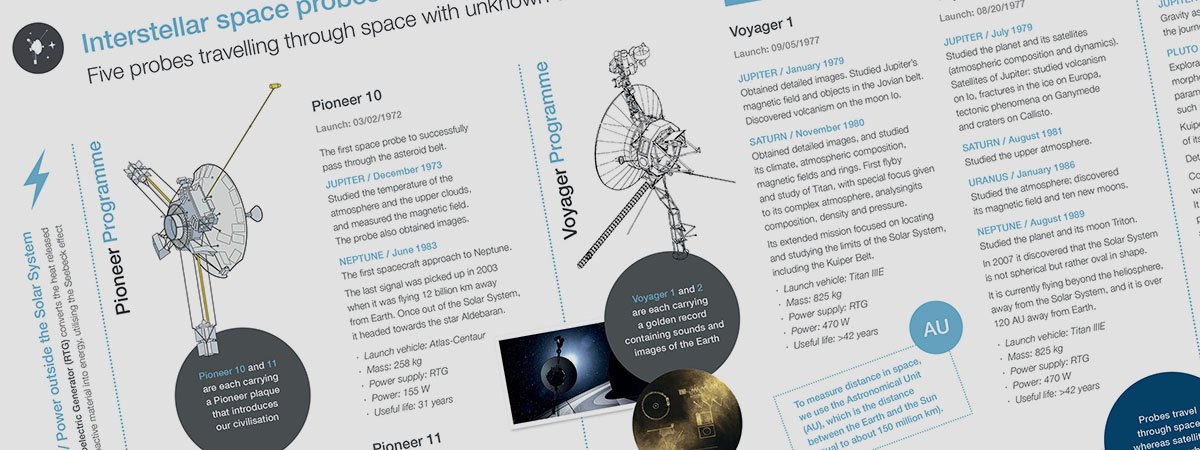Exploration has always been a compelling need for human beings. First it was our own planet, where new worlds and lands were discovered, bringing a wealth of knowledge to humankind. The world became smaller and smaller, and nowadays we are acquainted with every corner of it, at least on the surface.
There are currently five space probes that lie beyond the boundaries of the Solar System. They are a work of aerospace engineering genius, both in their design and in terms of mission planning.
Once we had explored the whole of Earth, it was time to take the leap to explore our Solar System. Each of its planets presented difficult challenges, while at the same time offering new opportunities. The exploration of our planetary environment has contributed to the discovery of new materials and detailed knowledge of phenomena that directly or indirectly influence our own planet.
The final challenge was that of leaving our Solar System and exploring deep space. The five space probes that are currently immersed in this exciting adventure travel thousands of kilometres away from our planet every day. Some of them are no longer in contact with us, and no longer send us data of what they see or hear; however, they still carry a message for any sentient being that may encounter them. Other probes are still sending data, allowing us to get to know an environment that until now has only been understood theoretically.
Aside from the contributions each of these space probes is making to human knowledge, one of the most outstanding aspects has been the feats of engineering that have been required to overcome the many challenges involved in the probes reaching their destination by a specific route, over distances that fall outside normal human understanding.
Collectively, these five probes (Pioneer 10 and 11, Voyager 1 and 2, and New Horizons) are the greatest feat of aerospace engineering that has ever been accomplished. And consider that the first of them, Pioneer 10, was launched into space in 1972. Impressive.
Imagine for a moment what any one of these missions entails. After building the spacecraft, it has to be successfully launched into space and directed towards the orbit of a planet which, after a gravity assist manoeuvre, launches it into a new orbit towards another planet… and so on. How many calculations do you have to do in order to successfully carry out something like that?
In this infographic we explain the characteristics of these five probes, the scope of their missions, and some interesting facts about each of them. We hope you enjoy it.
For downloading the infographic, please click here.


